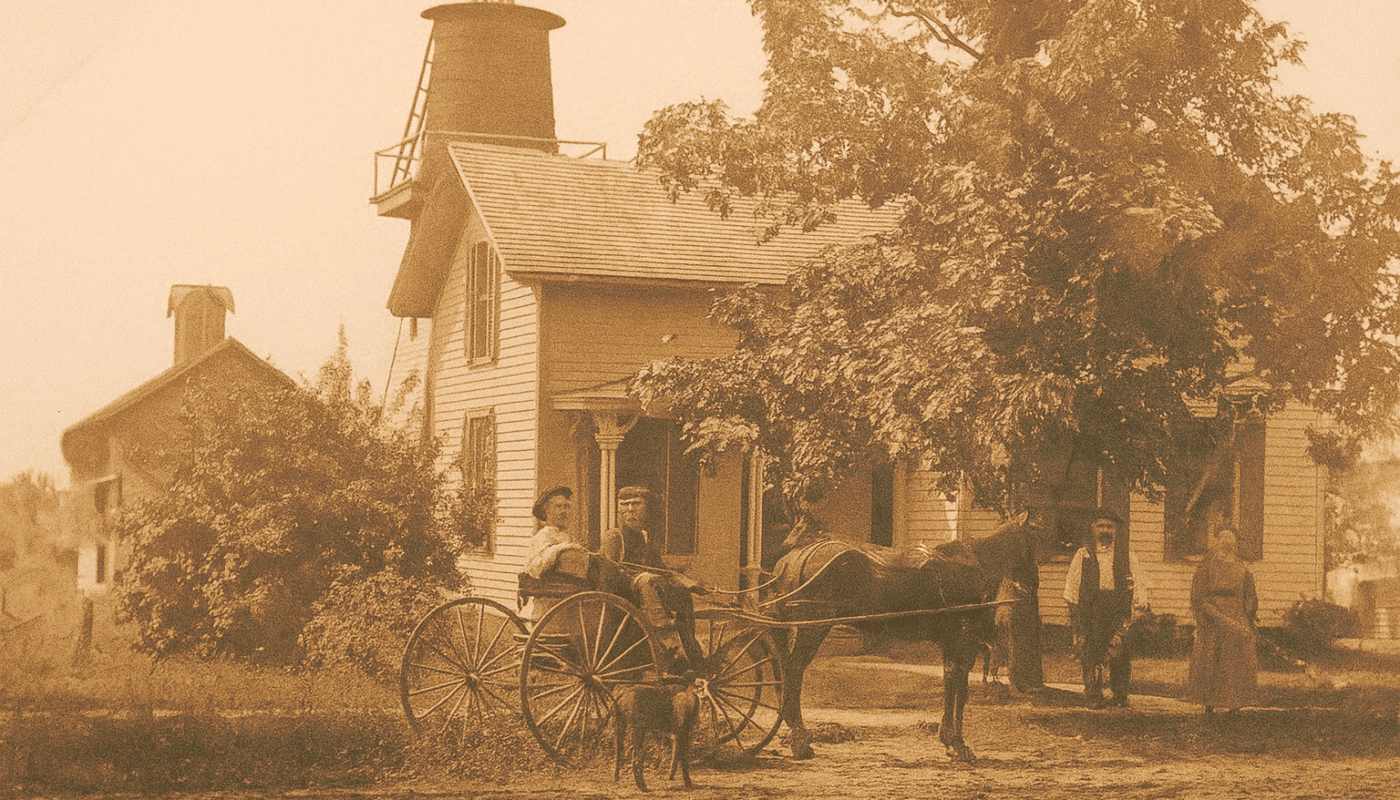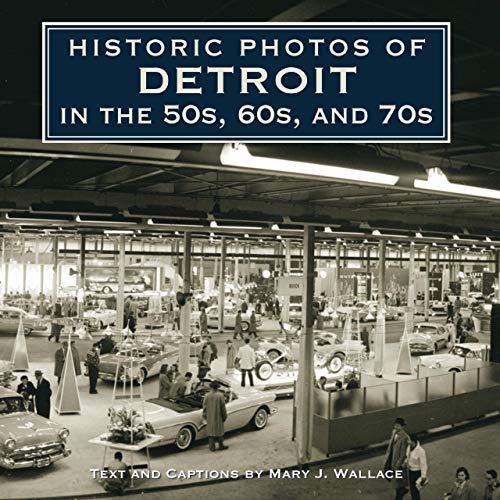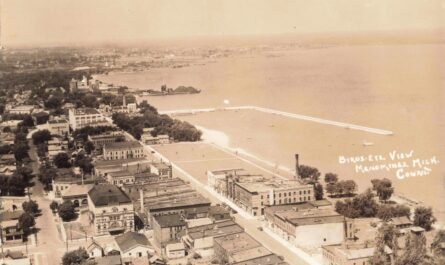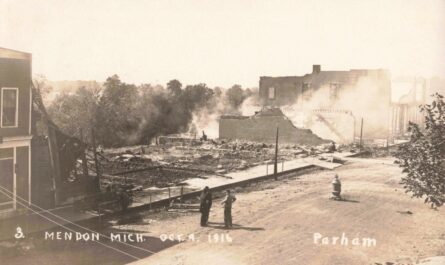The History of Samaria Michigan is a story of trains, letters, and steady community life near the Ohio line. By 1900, the Ann Arbor Railroad made Samaria a working rail village in Bedford Township, Monroe County. The depot handled passengers, express freight, and the mail pouches that connected farms to Toledo and Monroe. Across the way, the First Methodist Episcopal Church set the social calendar. Nearby, a two-story hall marked “G.A.R. and W.R.C.” kept Civil War memories alive. A wagon marked Telephone signaled another change: wires bringing quicker news and practical help.
Video – History of Samaria Michigan – Inspiring Rail-Era Stories
From Weeksville to Samaria
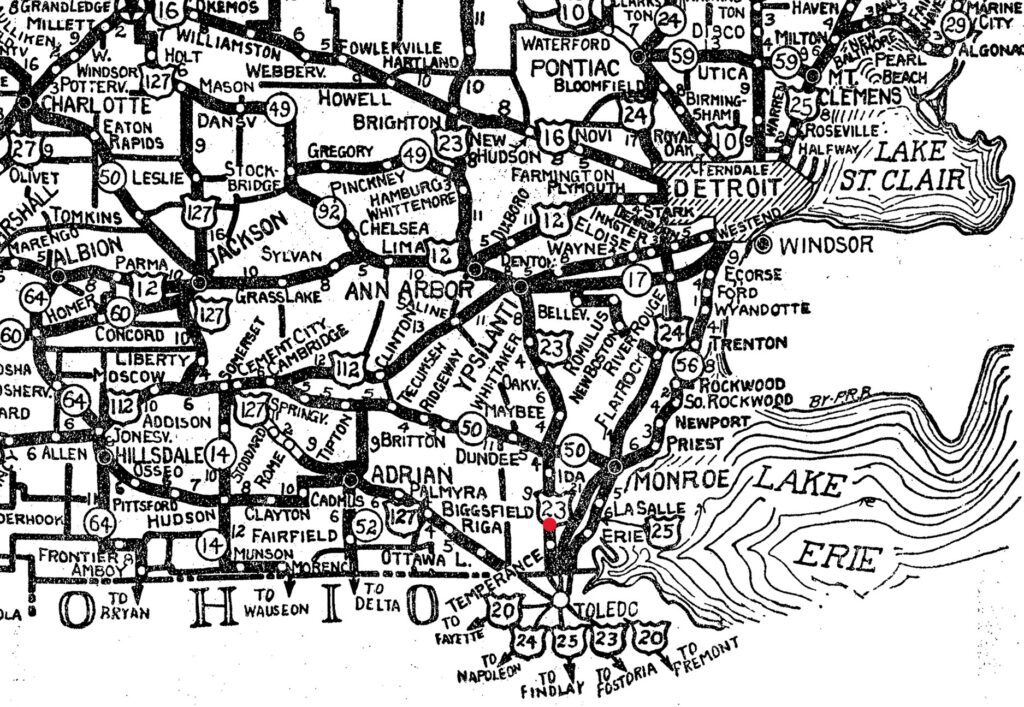
Early settlers knew the area as Weeksville, linked to Samuel and Mary Weeks. When the post office opened on January 17, 1879, the name “Samaria” was displayed on the window. The change reflected a growing, organized settlement with a postal service tied to the railroad. Over the next decades, platted streets, homes with deep porches, and sheds for teams filled out the core.
The Samaria Depot Set the Pace
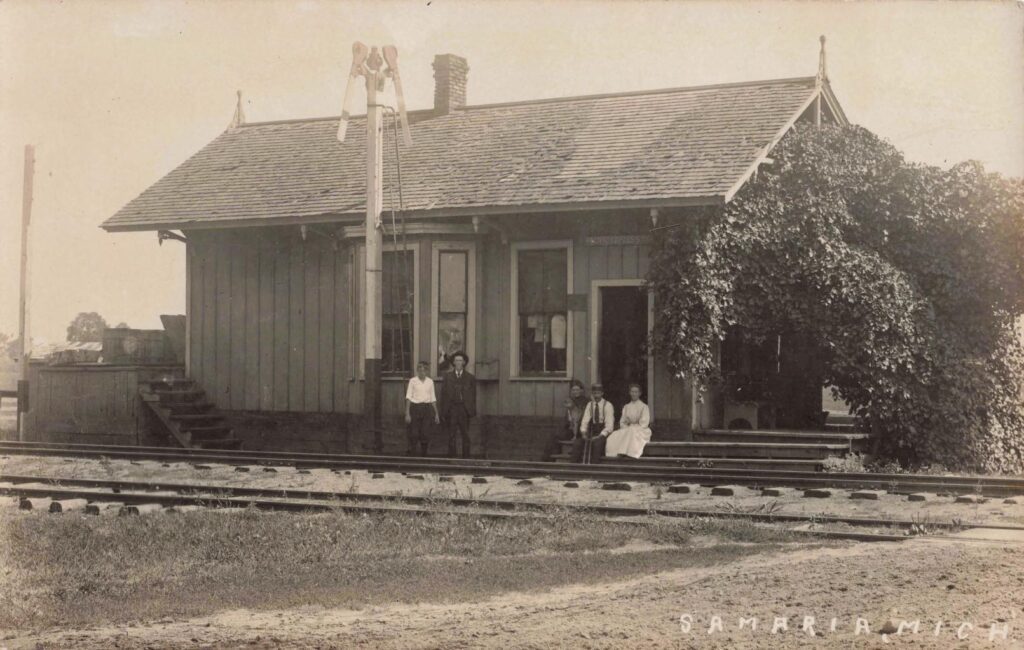
The rail station in the photos tells the story. It is small and efficient, with a bay window for clear sightlines and a semaphore to flag trains. The agent chalks arrivals on a slate. Mailbags are sorted on the platform and carried through a window marked for rural routes. The History of Samaria, Michigan, cannot be told without that platform. Outbound crates hold eggs, cream, and grain. Inbound boxes bring dry goods, machinery, and catalogs that shape what people buy and how they furnish their homes.
Church Bells and Community Rooms
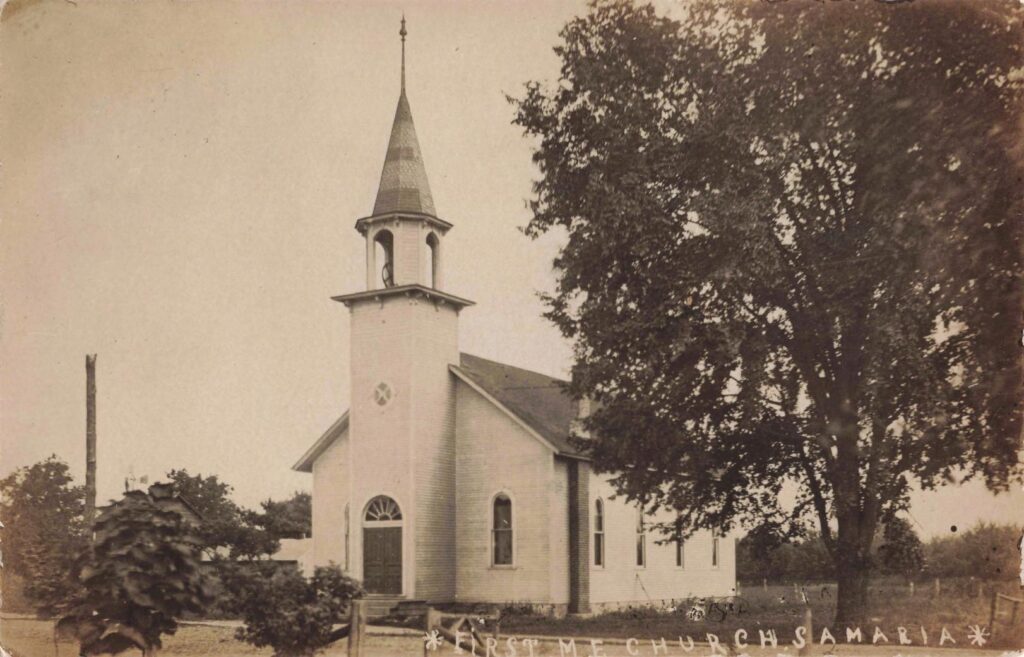
Across the tracks, the First Methodist Episcopal Church with its square tower and open belfry stands as a landmark. The sanctuary hosts Sunday worship and weekday programs. Suppers, sales, and box socials help families meet needs and raise funds for fuel and repairs. The bell marks weddings and funerals. It also warns of storms or fires. In a small town, the church is a calendar as much as a building.
Veterans’ Halls and Public Memory
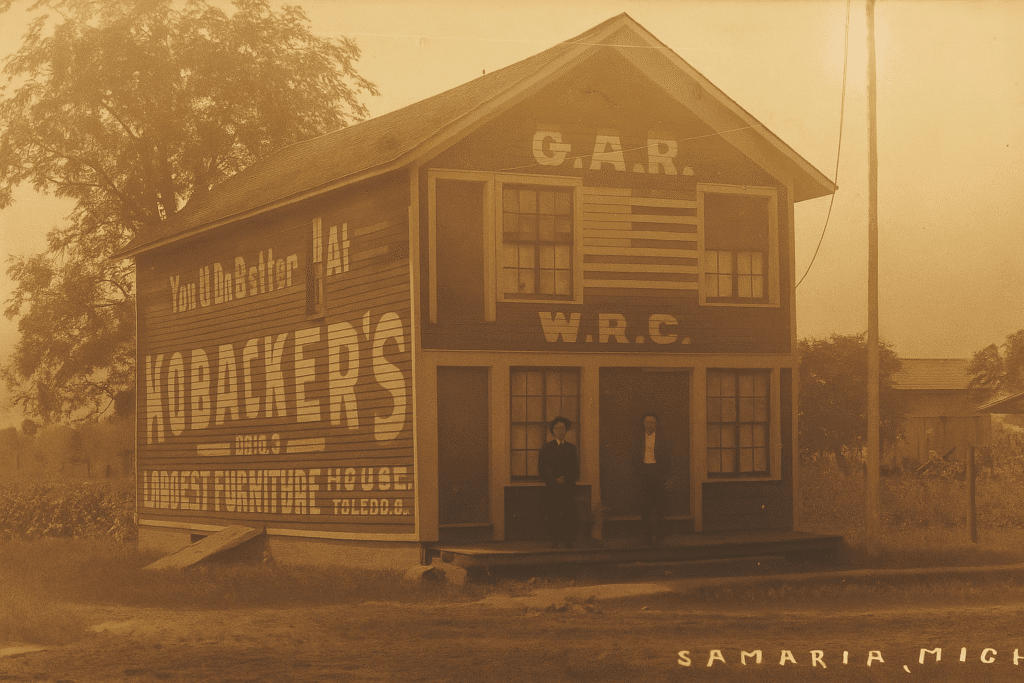
The two-story hall lettered G.A.R. and W.R.C. shows the weight of memory in early-1900s Michigan. The Grand Army of the Republic organized Union veterans. The Women’s Relief Corps supported widows, hospitals, and cemetery decoration. Their work taught the next generation about duty and loss. Each May, the post marched with flags, then paused among headstones for readings and wreaths. The bold Kobacker’s advertisement on the siding points to Toledo commerce carried by the railroad.
Wires on the Roadside
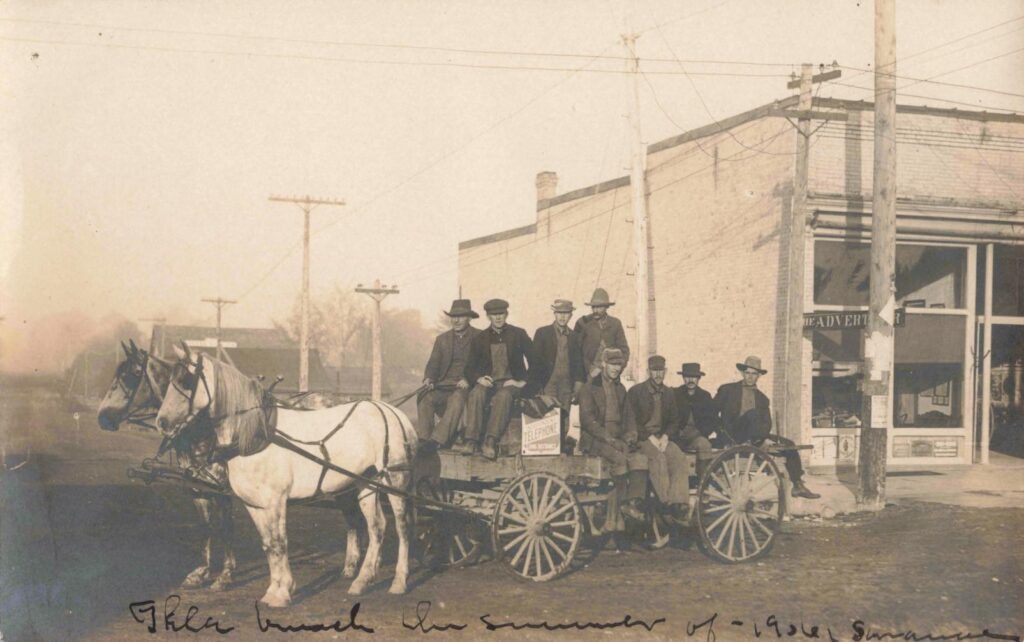
One photo shows a utility crew with a Telephone placard on a wagon. These early teams extended and repaired lines to depots, shops, and farmhouses. Party lines carried news, prices, and urgent calls. A mother could reach a neighbor. The agent could call ahead for instructions. The History of Samaria Michigan includes these wires as much as the rails. Together, they shrank distances that once took hours by horse.
Home Life on the Porches
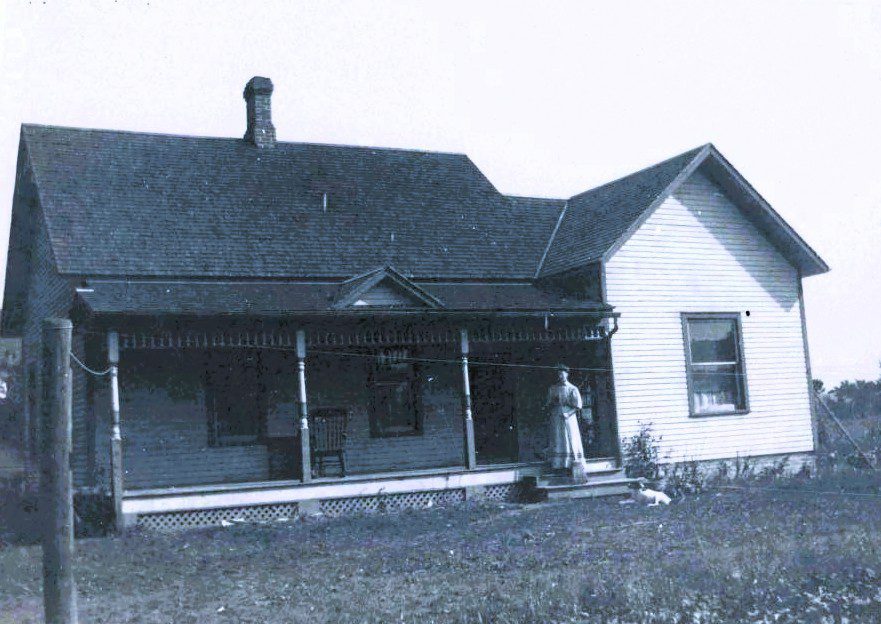
Porch photos from local farmhouses round out the picture. Deep verandas face graded lanes. Chimneys punch through simple gables. Sheds and side yards reveal where teams were housed and tools were stored. Families worked long days, but evenings often moved to the porch—shelling peas, rocking infants, and watching the dust settle after the train passed.
Images on this page may contain affiliate links in which we may receive a commission. See our affiliate disclosure for details.
Historic Photos of Detroit in the 50s, 60s, and 70s
Historic Photos of Detroit in the 50s, 60s, and 70s documents what a Metro Detroiter would have experienced through those decades, from the commonplace—to a visit from John F. Kennedy.
1900–1915 in Summary
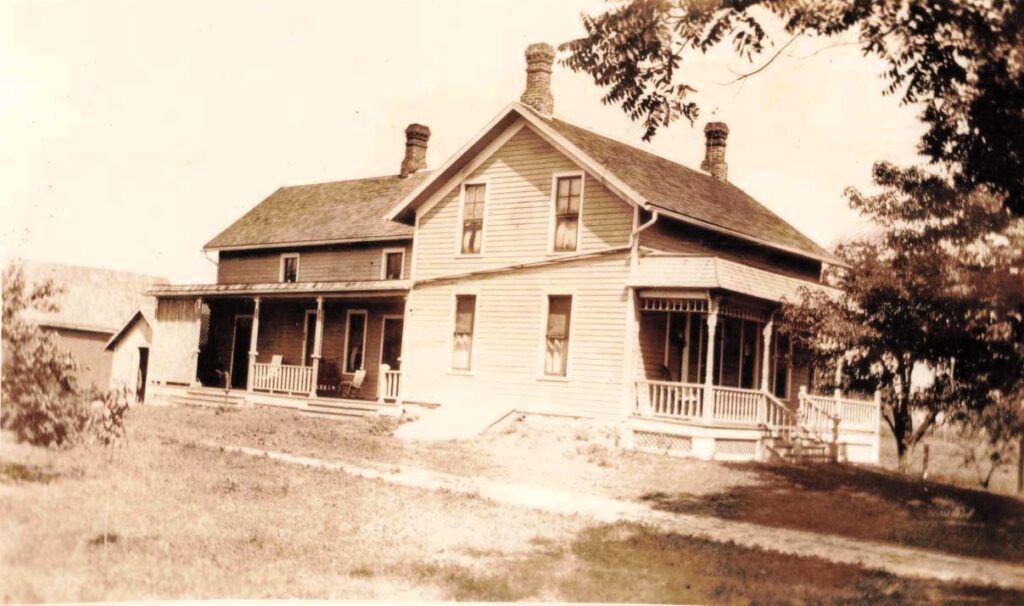
From 1900 to 1915, Samaria was modest in size yet strongly connected. The railroad and the post office moved goods and letters. The church and lodge rooms gathered people and kept civic life steady. The telephone added speed. The History of Samaria Michigan is not about big speeches. It is about routine that mattered—milk cans clattering at dawn, the whistle at mid-day, and a bell that called the town together when needed.
Why This Era Still Matters
These years framed habits and places that lasted well into the 20th century. Roads improved and automobiles appeared, but the depot remained a practical front door. As the veterans aged, Memorial Day still drew crowds. The church kept feeding the calendar. The phone brought Samaria into faster contact with Toledo and Monroe. When we look at the photos—platform benches, a painted lodge wall, a wagon marked “Telephone”—we see how a small Michigan village moved confidently into the new century.
Sources
“Rural Free Delivery.” United States Postal Service, USPS, n.d.
“Residents: History.” Bedford Township, MI, n.d.
“Ann Arbor Railroad | Clarke Historical Library.” Central Michigan University, n.d.
“Woman’s Relief Corps.” Library of Congress, 7 July 2025.
“Samaria, MI.” MichiganRailroads.com, n.d.
“Bedford Township History—Then and Now.” Bedford Yes, PDF, n.d.
“First Methodist Episcopal Church.” Michigan Tech, Center for Community Arts, 11 Jan. 2017.
“Samaria, Michigan.” Wikipedia, Wikimedia Foundation, last modified 2025.
“Michigan Bell.” Wikipedia, Wikimedia Foundation, last modified 2024.
“Ann Arbor Railroad Company Collection (Index).” TrainWeb / Clarke Historical Library archive index, n.d.
